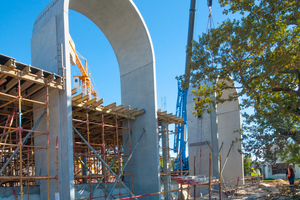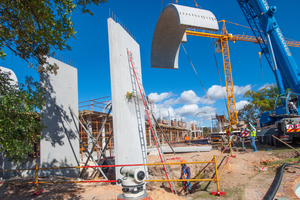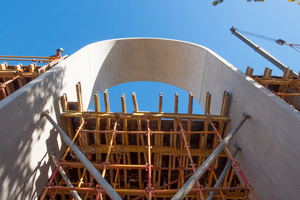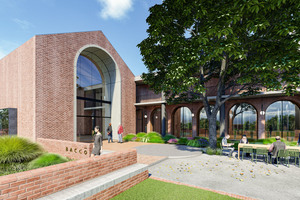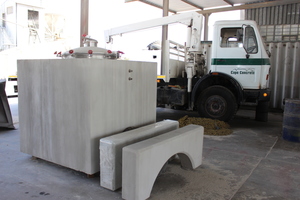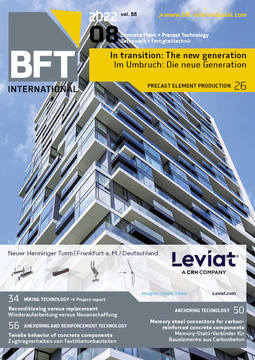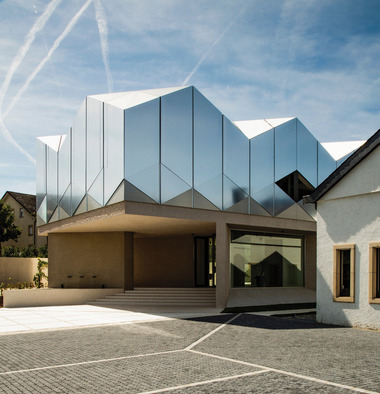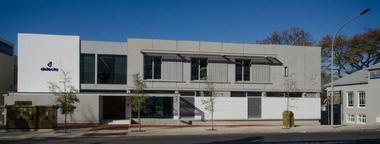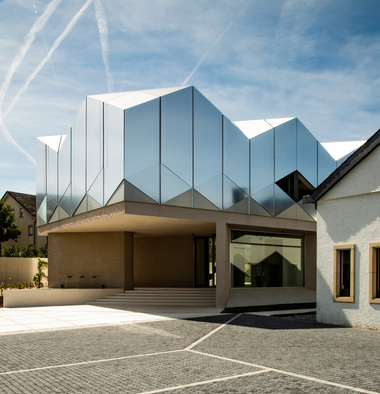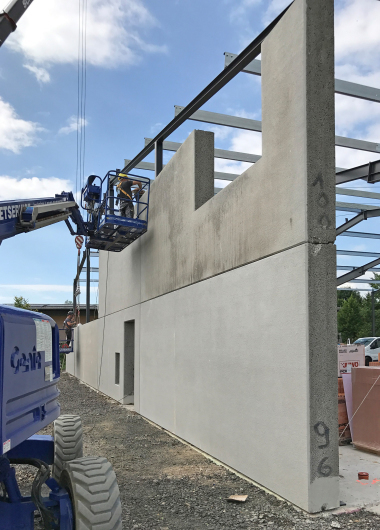Precast concrete arches set the tone for winery in Paarl
Seven Roman-inspired precast concrete arches manufactured by CMA member, Cape Concrete, form the principal architectural feature of a new winery at Bacco Estate, a recently established wine estate fringed by spectacular mountain scenery on the outskirts of Paarl.
Due for completion in time for 2022’s January harvest, the winery is a three-tiered structure comprising: a 1 000m ² basement/cellar; a double-volume 1 100m² ground-floor which houses a 700m² tank processing area and a 400m² tasting section. The structure also includes a 200m² first floor administration section and a triple-volume glazed atrium.
“We were presented with the basic equipment layout by the consulting process engineer, Gerard de Villiers,“ said architect Anthony Stricker of Anderson Perry Partnership Architects (APPA). “It included the tank elements and wine barrels and gave us a footprint which formed the basis for our layout.
Although function played a key role in our design, we were inspired by the scale, structure and symmetry of Roman architecture, but without the ornamental flourishes associated with styles of classicism. This was at the request of the estate’s owner, Nathan Jankelowitz, who wanted the building to be a visual reference of the contemporary ‘Super Tuscan’ wines produced by the estate. He also requested that the arches be constructed from precast concrete because of its superior finishes and ease of construction.
Cast in three sizes, all seven arches comprise precast curved sections supported by two vertical precast wall panels. The front of the building is dominated by two of the three largest arches as modern-day portcullises, which at their highest point, rise to an imposing 10.5m. We made these arches larger because they form the structure’s public portals. Moreover, they encase glass panelling and doors, and their greater depth enabled the glazing to be recessed for sun protection,” said Stricker.
Largest arches weigh 15 tonnes apiece
The panels of the largest arches weigh 15 tonnes apiece and measure 7.8m (height) x 2.59m (depth) x 280mm (thickness). A 430mm portion along the front ends of the larger wall panels were stepped down to a thickness of 200mm to match the thickness of the curved sections, which weigh 12 tonnes and measure 200mm (thickness) x 2.59m (depth) x 5m (internal diameter).
One of the large arches provides access to the double-volume reception hall and wine tasting section and the other provides entry to an extension of the hall. Both spill out onto an entrance patio at the front of the building. The third large arch is positioned parallel to the first in the wine hall’s opposing gable wall elevation and provides access from the hall into an open courtyard. Besides the south-western arch of the wine-tasting hall, the courtyard is flanked by a 300m² finished goods dispatch store at the south-western end of the structure and the wall of the ground-floor processing section, which was built as a series of red-brick mini-arches with glazed infills.
The dispatch section accommodates two of the mid-sized arches installed on opposing gable elevations. The panels for these arches measure 7.2m (height) x 800mm (depth) x 200mm (thickness) and the curved sections measure 200mm (thickness) 800mm (depth) x 5m (internal diameter). The arch which faces onto the courtyard has a brick infill to match the arch motif of the production section. The other has an insulated timber sliding door which provides vehicular access to the store.
The third mid-sized arch also has an insulated timber sliding door and is positioned at the back of the building to provide a service/vehicular entrance to the grape sorting section.
The smallest arch was installed inside the building and forms one of the four elevations on the south-western side of the glazed atrium. Its panel measurements are: 6.5m (height) x 450mm (depth) x 200mm (thickness) and the curved section came in at: 200mm (thickness) x 450mm (depth) x 5m (internal diameter). This arch was glazed to match the glazing in the rest of the atrium.
Before the design elements were finalized, Cape Concrete was approached by APPA to establish whether precast arches were a feasible option. Cape Concrete factory manager, Johan Nel, says not only were they doable but the off-shutter finish achieved with precast concrete is difficult to achieve with in-situ casting.
“It was very important that the finish on the inner sides of the arches were glass-smooth and we used two concrete mix designs: the panels were cast with a 40MPa mix whereas the arches were produced with a 50MPa self-compacting mix because it flows easily and expels air bubbles.
The moulds for the curved sections were made in-house which is an art in itself requiring great skill. The wall panels were cast on flat steel beds and we only had to manufacture the sides of the two moulds. The smooth off-shutter finish is located on the inner sides and on the two outer edges of the panels and curved sections. The outer surfaces were given a very good steel-floated finish which also required considerable skill to achieve,” said Nel.
Cape Concrete achieved excellent finishes
Structural engineer, Donovan Webber of Sutherland Engineers, said Cape Concrete achieved excellent finishes on all the arch components. “Casting them on site would have been very difficult and we couldn’t have achieved the curving with the same degree of accuracy, let alone the smooth finishes which were realized. We designed the smaller panels with grouting ducts as opposed to the larger panels which were cast with stub columns and starter bars. However, the top of all the panels were imbedded with starter bars for tying into the curved sections. Initially, we looked at casting the arch sections in segments but it would have made the installation somewhat more complicated. It would also have required on-site staging to support the segments and would have slowed up the project, so a decision was made to cast them in one piece.
The smaller panels were lowered onto starter bars which had been cast into the footings and the concrete floor. Once in position and aligned, the panel ducts were filled with grout. The curved sections were then lowered onto the panels, seated over the starter bars and grouted through the ducts which had been cast into the curved sections.
The largest panels were lowered onto the blindings of the arch foundations and were aligned using props and steel shims to ensure that once they were placed onto the panels, the curved sections would fit perfectly. The pouring of the foundation concrete only took place once the panels had been aligned and the curved sections grouted,” said Webber.
Commenting on the project, Nathan Jankelowitz said establishing a “Super-Tuscan” styled wine farm had been a long-held dream. “I decided to build a wine farm from scratch and bought the land from a property consortium in 2013. We currently have 15 hectares under French Bordeaux and Italian varietals and will be planting another 15 hectares from 2022. This will give us a harvest yield of 200 tonnes a year which places us firmly in the boutique wine-farm category. We will be selling into both the local and export markets and will mature the wine in barrels for two to four years.”
CONTACT
Cape Concrete Works
Wimbledon Road
Blackheath 7580
Cape Town/South Africa
+27 21905 1200
Expertenteam:
Architekten: Anderson Perry Architects (APPA)
Statiker: Sutherland
Generalunternehmer: WBHO Construction
Verfahrenstechniker: Gerard de Villiers
Betonfertigteillieferant: Cape Concrete
Baugutachter/Bauherr: JMHT/Nathan Jankelowitz
Bauingenieure: Kantey & Templar Consulting Engineers
Brandschutz & Konstruktionsingenieur: Ekcon Structural Engineers

